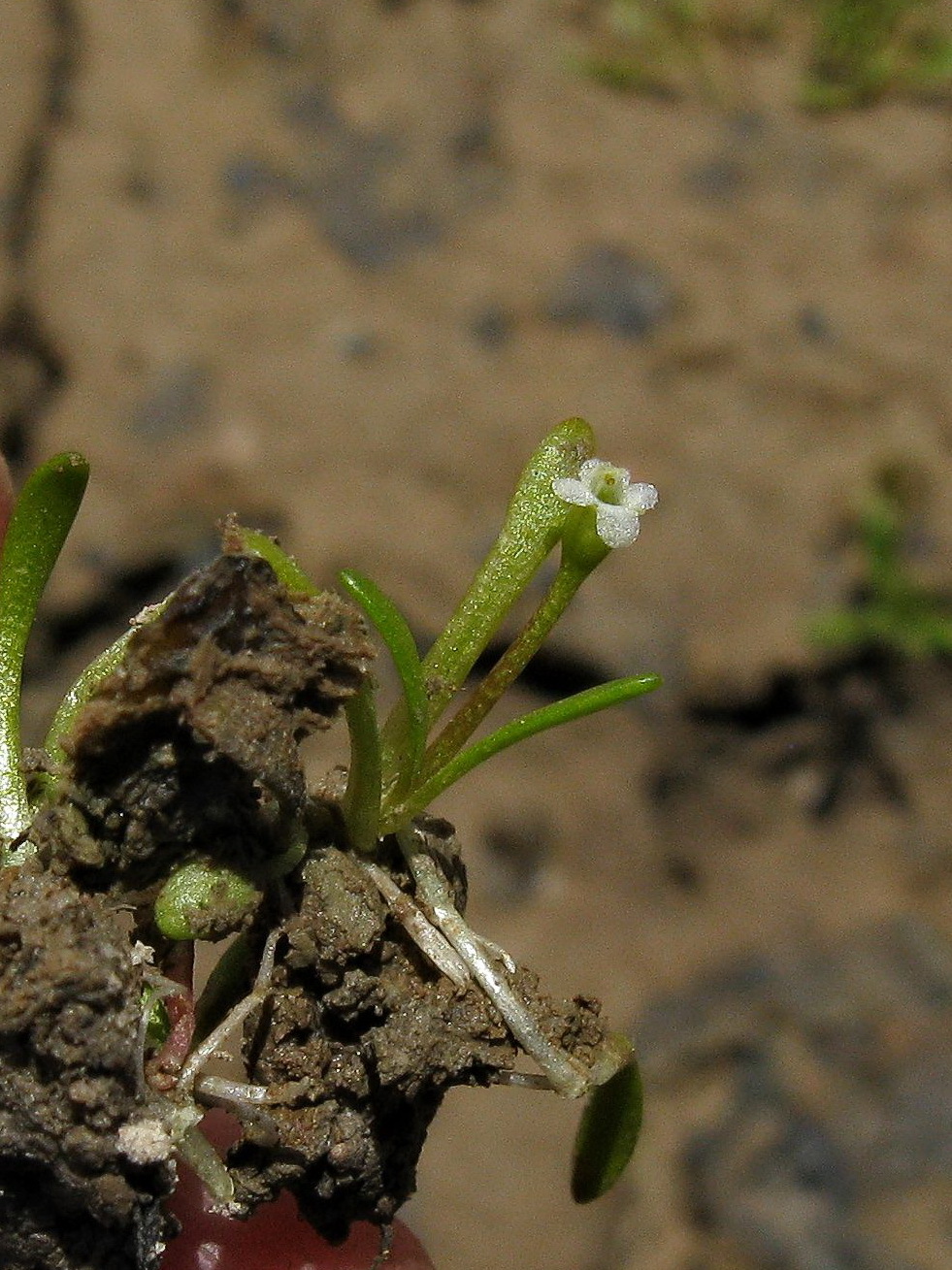Glossostigma diandrum
(L.) KuntzeAquatic or terrestrial, possibly annual herb, usually mat-forming, glabrous. Leaves 1.5–14 mm long; lamina narrow-elliptic to oblanceolate, 1–7 mm long, 2–3 mm wide, 0.5–2 times longer and 1–3 times broader than petiole, base gradually narrowed into petiole, midrib apparent on lower surface; petiole linear, 1–5 mm long. Pedicels erect, 2–15 mm long. Calyx 0.5–1.5 mm long, red-brown or sometimes green, rarely lined black, 3-toothed, 1 tooth larger; corolla white, pale blue or mauve, lobes 3–5, 0.5–1 mm long, sometimes ciliate; stamens 2; stigmatic lobe narrow-elliptic. Flowers throughout year (after rain).
LoM, RobP, MuF, GipP, NIS. All mainland States except Tas. New Zealand, India, Africa. Apparently very rare in Victoria, where recorded from a few collections in the north (e.g. near Red Cliffs, Robinvale, Donald, Terrick Terrick, Strathmerton) and from a single collection at Dromana on the Mornington Peninsula. Usually along waterways or in shallow depressions on heavy clay soil.
In some Victorian and New Zealand material there is evidence of cleistogamous flowers, sometimes on plants also bearing normal flowers. Unlike those of Glossostigma cleistanthum, however, these flowers are prominently pedicellate.
Barker, W.R. (1999). Scrophulariaceae. In: Walsh, N.G.; Entwisle, T.J., Flora of Victoria Vol. 4, Cornaceae to Asteraceae, pp. 483–528. Inkata Press, Melbourne.
 Spinning
Spinning



